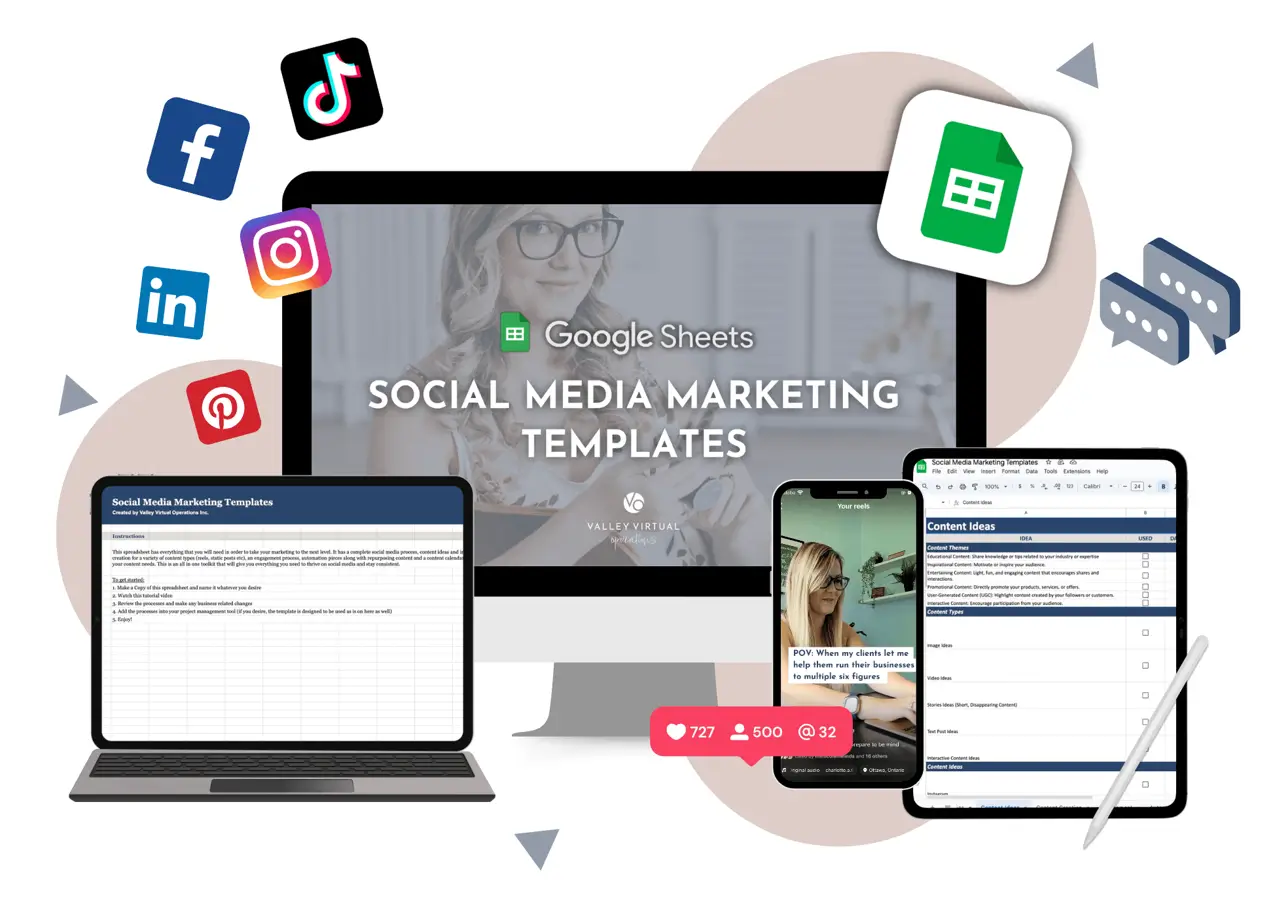As a business owner, your website is one of the most important things you can create. However, it’s not as quick and easy as it seems. Building a website takes time, planning, and a small amount of skill to make it work properly.
On the bright side, it is possible to create a stunning website on your own with the right processes… and I know what they are.
No matter if you’re a solopreneur or you have a team behind you, check out these processes to build the website of your dreams.
Design Process
The design of your website is essential to its success. If it’s too plain or complicated, you risk turning off any potential clients. And, while you can change the design at any time, doing it too much can confuse your clients and make them distrust your business.
By creating a design process, you can make your website look uniform across the platforms and create templates for all posts and pages. This process should include branding colors, designs and the same aesthetic across all pages and platforms.
Even if you don’t have a designer on your team, I recommend finding one to create a mockup of your website. That way, you can see how it looks without commitment. (You can get an affordable mockup on sites like Fiverr or Upwork).
You’ll need an idea of the pages you need, how you want them to look, the overall theme of your website, how to organize the buttons and CTA, and more.
A design process will keep you organized, on track, and less overwhelmed with the choices.
Copy Process
Now that you have a design, it’s time to move on to the written part of your website.
The copy you use says a lot about your business, so having a copy process will make sure everything is clean and cohesive. It will handle everything you need to make your website shine- including your introduction, pitches, services, and blogs. Even your testimonials count as copy, so put them in the process as well.
For the copy process, you can add in words you prefer to use (like “client” over “customer”), how to structure your paragraphs/bio/blogs, and ways to keep your tone consistent. You can also create copy guidelines and a brand guide to help with this.
It’s a lot of pressure, so hiring a copywriter will help if you don’t have one already. Or, if you can’t hire a copywriter, you can use chatGPT to get a good start and finesse it yourself.
Integration and Testing Process
If you have products or services for sale, the integration and testing process is a MUST.
That way, you can check the links, set up the payment system, check the unity of the images, and make sure everything works as it should. Make sure that you implement your testing process through different stages of your website build.
Launch Process
Finally, how do you plan to get eyes on your new site? If you don’t have a launch process in place, then you’re going to miss out on potential traffic.
To have a successful launch, you want a process in place that can guide you through the marketing, engagement, and other hurdles that a new website can bring.
To create it, ask yourself:
- How will you let your audience know about the new website?
- Do you have any specials to offer them during launch?
- Will you need to explain the new features?
- How will you encourage engagement? Contests? Giveaways?
- Which social media platforms will you use?
- How will you alert your subscribers?
- How long will your special offers/contests last?
Answer these, and you’ll be well on your way to a successful launch process.
Important Tools
If processes are one side of the coin, then tools are the other. In order to build a successful website, you’re going to need these tools to help your processes along.
A Website Builder
One of the easiest ways to build your website is to use a dedicated site like WordPress, Wix, Squarespace, or Weebly.
I prefer WordPress because- in my opinion- it lets you get the most out of your website experience. However, they all have benefits that can take your website to the next level.
A Hosting Service
Most of the website-building platforms will have built-in hosting (like Squarespace), but if you’re going with WordPress, then you’ll need an outside service to host your website.
Some options are BlueHost, HostGator, HostMonster, and GoDaddy. The only downside is they all vary in cost, so shop around to find the best price for your budget.
A Custom Domain
Obviously, you want a domain that represents your business and gives your clients a clear idea of what they’re looking at.
If you can, get a domain that’s as close to www.YourBusinessName.com as possible. That way, it’s clear what your website is about from the very beginning. Try to avoid .net .org domains.
An Email System
If you don’t have a business email yet, then you definitely should get one set up.
While a standard Google email will do in a pinch, it’s not very professional. Instead, try to set one up that connects to your website. A simple Contact@YourBusinessName.com will impress your clients and increase your business reputation.
As a bonus, you can set this up yourself through Google Workspace in about 10 minutes.
Important Team Members
Now that I’ve thrown all this information at you, I want to remind you that you do NOT have to tackle this massive project on your own. Instead, outsource (or hire) these key performers to give your website the edge it needs to shine.
Web Developer
No one knows websites like a developer, and they can take all the processes you’ve created and seamlessly meld them together. They can also fix bugs and trim the fat to make it lean and efficient. It’s not the cheapest, but it is well worth the money.
Copywriter
Your website needs written copy, and they write copy. What’s more, they write copy that’s meaningful, powerful, and able to connect with your audience especially if writing isn’t your strong suit. Be sure to go with a website or conversion copywriter when making this hire.
Social Media Marketer
Part of your launch plan should include social media, and hiring a dedicated marketer can help take the pressure off your plate. They can also create posts, boost engagement, and keep your social media on target.
Bonus Processes
Blog
Just because you have a new website doesn’t mean you have to give up all your hard work. By creating a blog process, you can decide if you want to import your previous posts, create new templates, decide if you plan to repurpose them for social media, plan which topics to use, and more.
Maintenance
All websites need routine maintenance, and creating a process will make it smooth and efficient when the time comes. Use it to keep track of your subscriptions, how to handle bugs, things to check before publication, and anything that needs tweaking.
SEO
SEO is the hidden gem of a website. All of your blog posts, website pages, and metadata should have SEO-rich keywords and backlinks to help spread your website further on the web and attract key people to your website. You also want to back up your website every month. That way, you can keep your hard work from disappearing into the void or being lost to a hacker.
Final Thoughts
Building your website may seem overwhelming, but if you have these processes and tools in place- not to mention the people- you’ll have a stunning website in no time.







